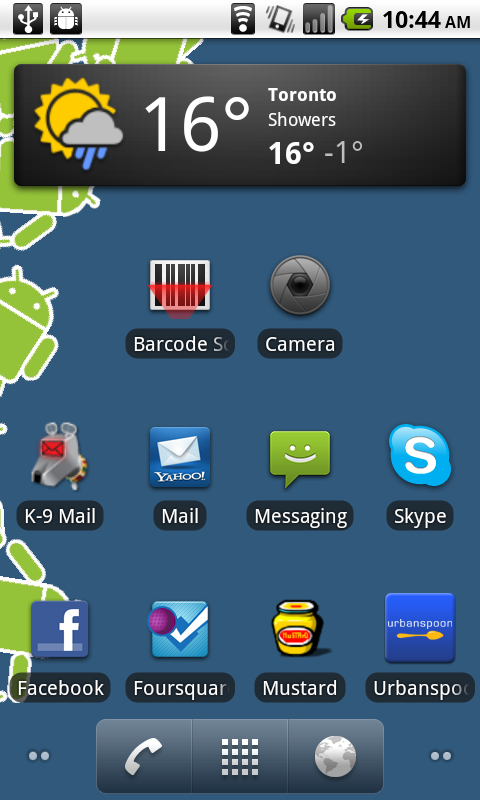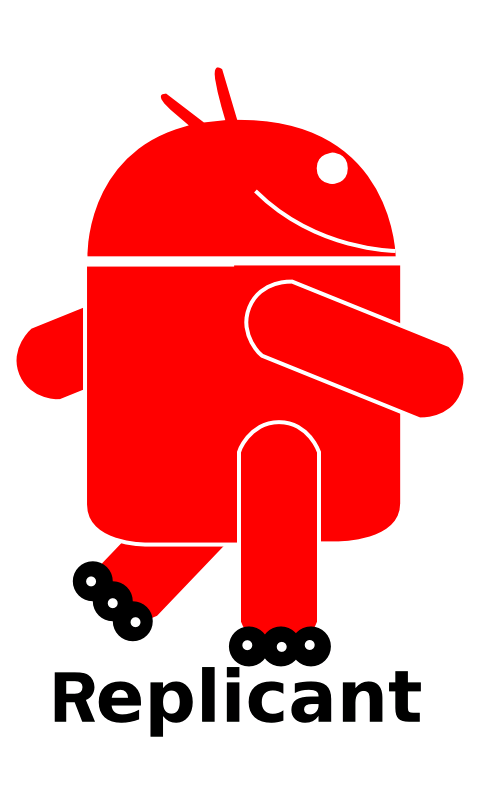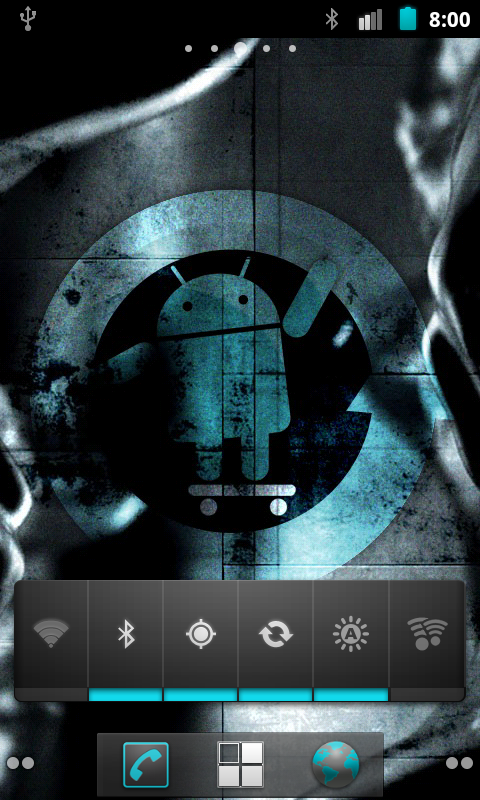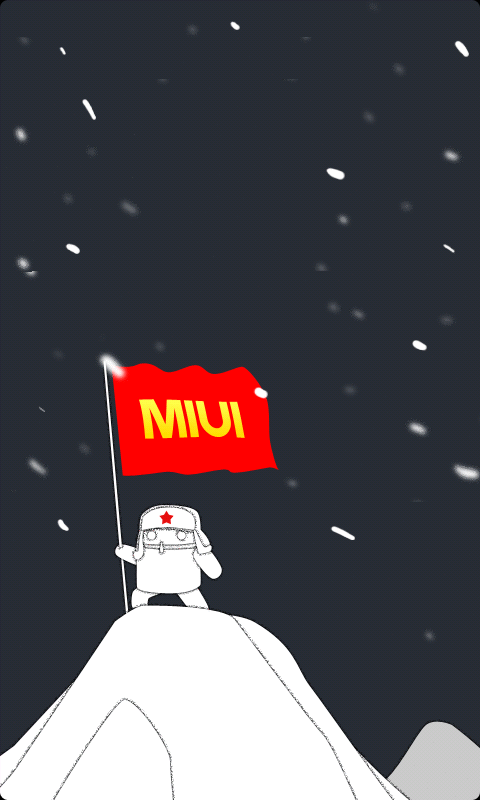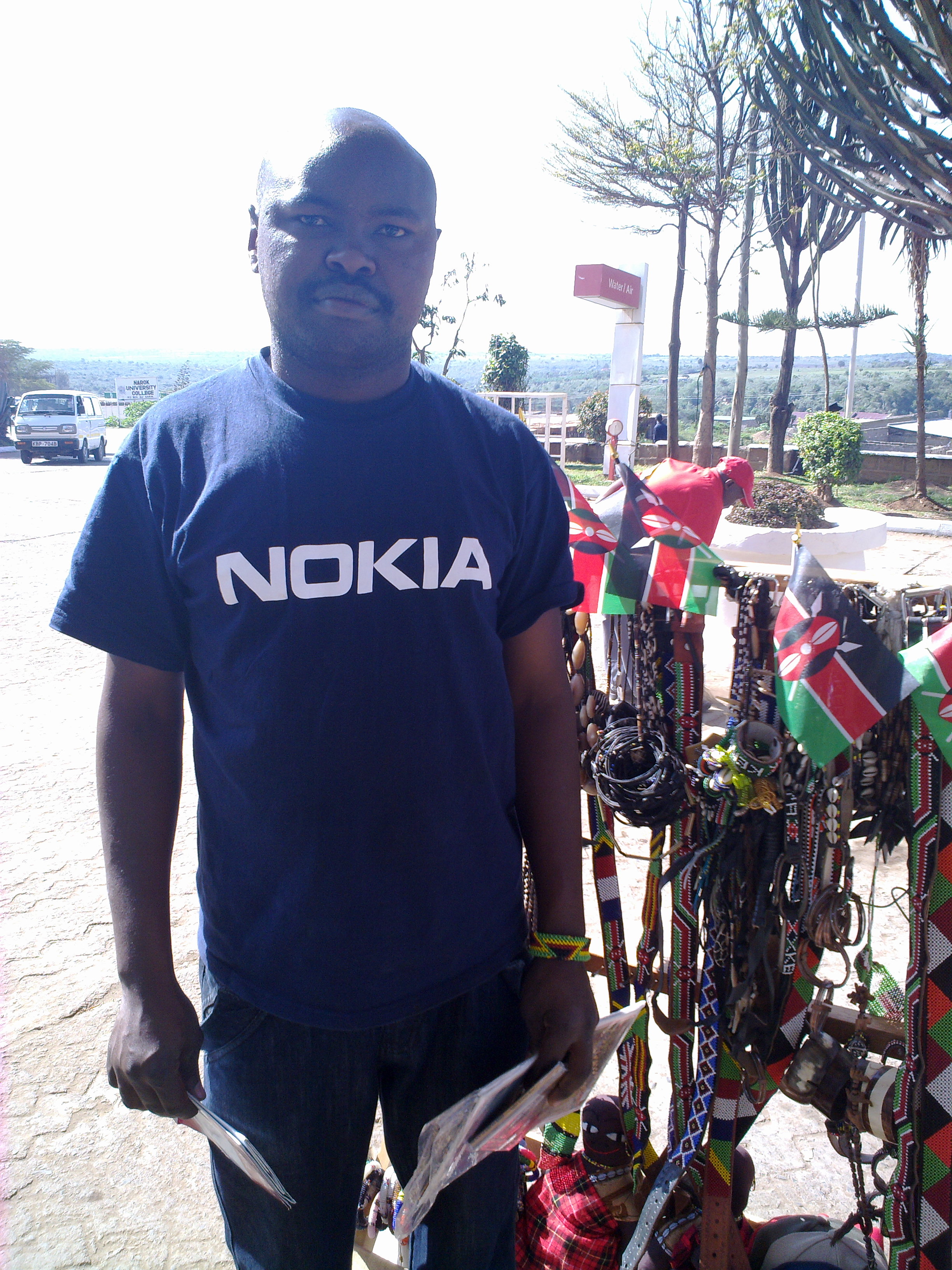You’ll recall that the word “Nexus” means three things when it comes to phones:
- “Pure Android” — an operating system free of carrier bloat;
- Factory unlocked — usable on any network (frequencies notwithstanding);
- Unlockable bootloader — and the widest available selection of custom kernels, ROMs, etc.
It’s this recipe for success that has kept me faithful to the Nexus line for three devices and counting — four if you include the Nexus 7 tablet charging in the other room as I write this. To be honest I’m not so much a fan of plasticky Samsung phones; that I’ve bought two of them says something about my unfaltering loyalty to Nexus.
The first time I saw the Nexus S was in the hands of a Mr. Dave Dobbin. At that time he was the CEO of Mobilicity, and in January of 2011 he had the T-Mobile version with him at a promotional event I attended. Yours truly go to hold it for a precious few seconds. Though otherwise an unremarkable slab, the screen on this Samsung was a wonder to behold. The colours were incredibly vivid and rich; the blacks so deep as to be an abyss. And the glass was impossibly curved, fitting perfectly against your cheek when on the phone.
I came very close to purchasing one at a Best Buy during South by Southwest later that spring, and when Mobilicity started selling it in April I could no longer resist.
The first beneficiary of this purchase was actually my Nexus One. Relieved of its day-to-day duties I was able to figure out this whole rooting and ROM-ing business with drastically reduced consequences. It wouldn’t be until December, 2011 that I’d load the legendary CyanogenMod ROM onto my Nexus S; when I did I was pleasantly surprised by the inclusion of a fully-functioning Google Wallet app. I used it with the S’s on-board NFC chip to make my first contactless mobile phone payment, a fancy tea at a posh supermarket café. I’d like to believe it was the first such event in Canada; it probably wasn’t but that’s my story and I’m sticking to it.
At the end of that month my girlfriend and I visited Hong Kong (my 6th trip there!) to ring in 2013. While Samsung’s wide-bodied Galaxy Note was all the rage there, I was on the hunt for the “it” phone of the moment back in the Americas, the Galaxy Nexus. I felt confident buying it overseas because this third Nexus had a pentaband radio, meaning that I could enjoy 3G data speeds on any carrier anywhere in the world. It was also free of any carrier locks. Unfortunately it cost more in Hong Kong than on the Bell network back in Canada.
The Galaxy Nexus eventually got a wider release here, and I got mine on a subsidy from WIND Mobile in the spring. WIND is another upstart Canadian carrier, offering unlimited calls, texts and data at prices much lower than the incumbents. I had switched to them from Mobilicity before Christmas, when they ran a holiday promotion. WIND has proven to be much better in terms of coverage for me — for the first time since I was with Fido I could actually make phone calls from inside my home… What an age we live in!
This third Nexus was both new and familiar at the same time. There was the curved glass, plus a new version of Android — another hallmark of the Nexus line. I wasn’t really sold on the HD screen and dual-core processor at first; both seemed unnecessary, frivolous even. But over the ensuing months I came to appreciate my Galaxy Nexus as a mobile gaming powerhouse — maybe not the most noble use of bleeding edge technology, but a lot of fun nonetheless.
My trio of Nexus phones accompanied my girlfriend and I to Barcelona in the spring of 2012 — the Nexus One in her back pocket, the Nexus S in mine and the Galaxy Nexus tucked away in the hotel safe. We received lots of advance warnings about pickpockets and such but I needn’t have worried — the Nexus S was (and is) a perfectly usable phone, anyway. I finally convinced my girlfriend to accept it as her next hand-me-down this past September. I took back my Nexus One, which I’m currently using to explore free/libre software from the F-Droid repository. The Galaxy Nexus is to this day my side arm of choice, and will likely remain so until the next Nexus is announced.
]]>
A family portrait of Nexus devices, or at least their boxes.
I’ve pretty much resigned myself to be a Nexus user — not only are they sold unlocked, but they’re easy to root and have the widest available selection of custom ROMs.
The Nexus S (purchased in April, 2011) was my first device with NFC on board. I used it in December of that year to make the first documented mobile payment in Canada — unless someone can prove otherwise?
Later that month I took it with me to Hong Kong, and the next spring on to Barcelona. It took until the summer of 2012 to wean my girlfriend off of my her Nexus One, and accept the Nexus S as her next hand-me-down.
My next phone (current as of this writing) was another Nexus product from Samsung, the Galaxy Nexus. I got it this past spring from my new carrier WIND Mobile. It’s cursed with MTP but blessed with a dual-core processor and a 720 by 1280 pixel “HD” display — perfect for my gaming addiction of the moment.
The Galaxy Nexus was also the first pentaband Android device — that is, the same model worked on all 3G and AWS frequencies. Note that the US carrier Verizon got a separate CDMA-based variant. Sucks to be them.
]]>The complaints I read about Symbian were not lost on me. For the first time I was experiencing a mobile web browser that was actually usable. Not only did full web pages load in a matter of seconds, but double-tapping the screen would “zoom in” to fit the width of a single column of text. And the manual synchronization of personal info — calendars, contacts, tasks — was no longer necessary; an Android phone would do it in the background for you. In fact, setting up an Android phone (or several, as I’d later find out) required no more than a network connection and a Gmail account. As I held this slim block of mostly screen in my hands, I could only marvel at what I’d been missing.
For this particular smartphone veteran Android did have a shortcoming or two, along with a possible area of concern. Coming from my N86 photos and video on the Nexus were clearly not as good, although that was almost entirely offset by something no Nokia camera app would ever remember — that I hated flash photography and wanted my phone’s camera to fire up with the flash powered off. On the subject of power, battery life was fairly abysmal for someone used to going up to three days on a single charge. I’d thank my lucky stars if my Nexus lasted until sundown, especially if I was travelling. And then there was Google — or more specifically the requirement that I hand over pretty much all of my personal information to them. I’m still not a hundred percent comfortable with that.
You could argue, of course, that what you got in return for the data mining was a bargain — and for a lot of Android users I suspect that’s true. But what finally sold me on this new OS was learning how I could take Google out of the equation entirely yet still use Android, through the magic of custom ROMs. The hard part was getting started. The Nexus One was sold with an unlockable bootloader, like the BIOS on a Windows-based PC. By unlocking it you could flash a custom recovery image, and in turn use that to flash a custom ROM. But unlocking the bootloader required no less than a desktop computer, the Android software development kit, the Android Debug Bridge (adb), and something called fastboot.
If all this sounds confusing believe me, it was. But patience and the seemingly endless cross-referencing of forum threads finally paid off, and a universe of custom ROMs was now just a wipe and install away. My Android handset, powered by the Linux kernel, was as customizable as my Linux desktop computers. From this point onwards, nothing less would do.
King of the Android ROMs was CyanogenMod, which was famously ordered to unbundle the “Google Experience” — that is, the proprietary Google apps. FDroid, an alternative app market featuring only open source software, proved to be a worthy substitute for the official Android Market. Much of what is available there is excellent, but my freedom-hating reliance on the proprietary stuff — Flickr, Foursquare, games — had me using Google’s Market again before too long. Remember too that my new carrier, affordable as it was, provided almost no signal in my home. As such, Google’s chat service was a lifeline between me and a new lady in my life.
When I moved on to my second Nexus device my girlfriend got my Nexus One as a hand-me-down, which she uses to this very day. Her custom ROM of choice is MIUI, made available to the public by Chinese handset-maker Xiaomi. A big draw for MIUI is its themes — you can easily customize not only the wallpaper on your device but also the app icons, on-screen fonts, even the boot-up screen. But there’s more to it than that — MIUI has its own built-in backup and restore system, plus an excellent security feature giving you control over the sometimes suspicious permissions that apps can request.
If nothing thus far has sold you on the Nexus line of superphones, consider this final point: Google quietly revolutionized the mobile phone industry where Apple deliberately chose not to. The first three Nexus devices were sold through carriers just like the iPhone; but very much unlike the iPhone they were sold unlocked. My Nexus One has been to Malaysia, Hong Kong and Spain, and in each of those places expensive roaming charges were replaced with affordable service via a local SIM card. As you can imagine this is not a feature that carriers go to great lengths to explain, nor is it something that many customers appreciate or even understand. But it’s there, and like my Nokias of old it made my $500 CAD Nexus One a bargain.
]]>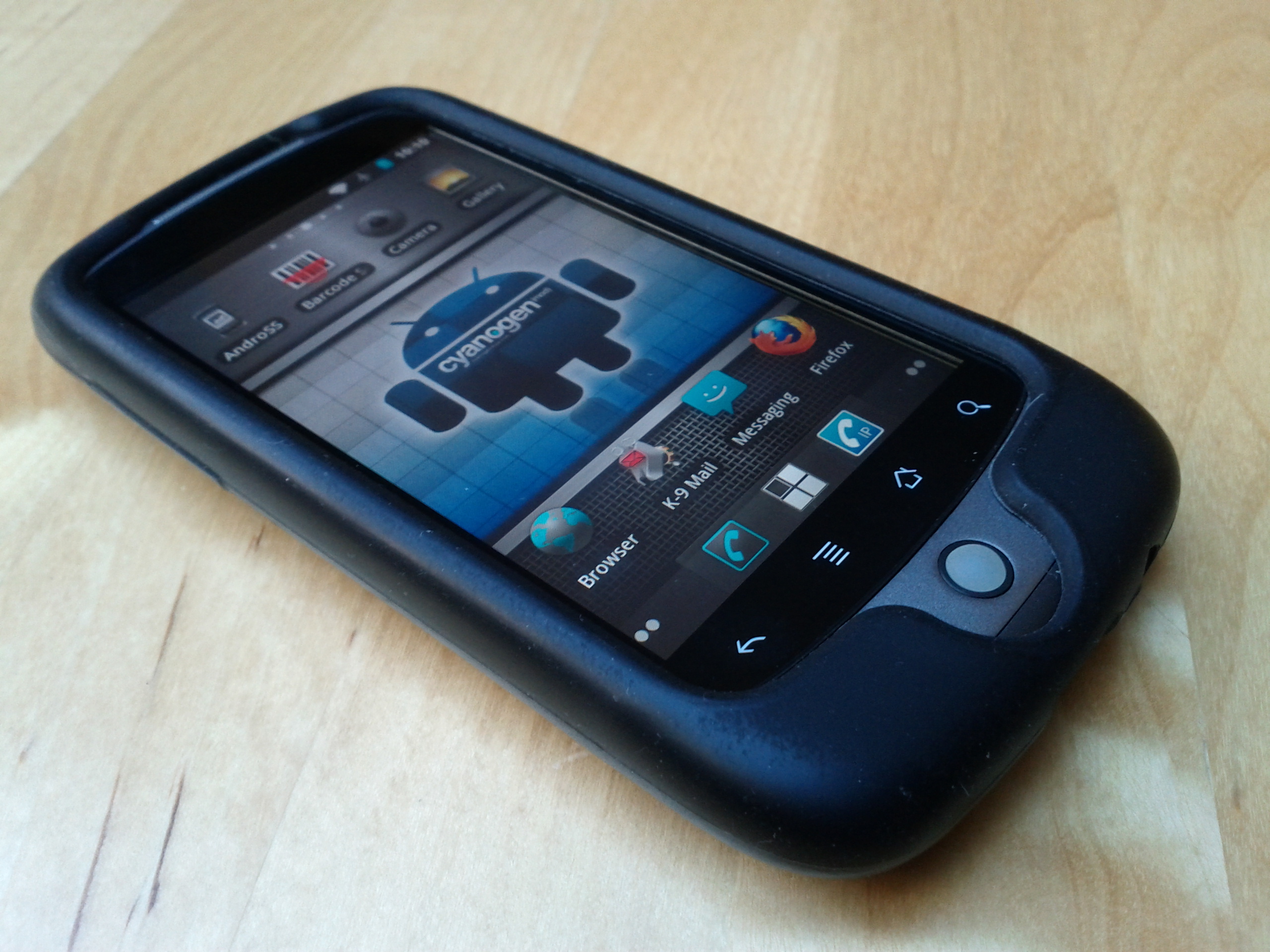
As a first Android device you could certainly do a lot worse than HTC’s G5 Google’s Nexus One. Mine is still in use as my girlfriend’s daily driver.
It all started out as a test, of not only Android but a new Canadian carrier as well. That fellow N97 24/7 alum Jonathan Bruha had already jumped ship to this same device put me at ease somewhat.
Though Android was orders of magnitude easier than Symbian to set up and use there were definitely a few things lacking in terms of utility. For example, in order to grab this screen from my N1 I had to download and install the Android SDK.
Considerably more effort was required to set up my computer to root the damn thing and flash a custom recovery image. Nexus phones are made for this, of course, but it was still a daunting task for a n00b like me. It took me an entire day to get my Nexus recognized by my computer via fastboot.
But man, was it ever worth it. Just like distro-hopping on my Linux computers I could now change ROMs on my phone at will. Mind blown.
In no short order I installed Replicant (needs work), CyanogenMod (amazing) and MIUI, which my girlfriend swears by to this very day. In fact, I had to pry the N1 from her hands just to grab that third screen!
]]>That November I boarded an overnight flight to London, the first leg of yet another once-in-a-lifetime trip that would take me onwards to Bangkok, Singapore, Taipei and Tokyo.
I was met the next morning in Piccadilly Circus by Tom Hall of WOM World, who graciously gave up his Sunday to give me a personal tour of London and loan me a Nokia for the destinations that lay ahead. Over brunch an N900 and N97 mini appeared on the table, plus a handset that was earmarked for me: the N86. Truth be told I was initially more drawn to the N900, being a desktop Linux user and all. But the N86 quickly proved to be the better choice — in fact, its camera was so good that my standalone point-and-shoot didn’t leave my suitcase for the next two weeks.
In Bangkok I took spectacular photos of the gold and purple Grand Palace and documented my first-ever tuk-tuk ride on video. I was also lucky enough to catch Al Pavangkanan, whom I’d met that summer on the N97 24/7 tour. Thanks to him I got to see Bangkok’s two famous IT malls, Pantip Plaza and MBK Center.
In Singapore I documented my first-ever durian fruit and a sunset view of the city skyline aboard the Singapore Flyer. I also got stood up by someone I was supposed to meet there. But I’m over it, really. More importantly, I snagged a local SIM card with unlimited data — a good thing, because by my fourth day abroad I had already burned through a two-week data roaming package from my carrier back home.
In Taipei I scored another local SIM, and kind of went insane with Qik, the live streaming video app that I first used on my E71. I kept it running over an entire breakfast in my hotel’s restaurant (much to the horror of the other guests there, I’m sure) and streamed an end-to-end walk-through of a night market. I’m pretty sure this is what would eventually win me that white N97 from the company.
In Tokyo there was sadly no option for local unlimited data. I spent about half an hour in a DoCoMo service centre before giving up and walking out, having come to the conclusion that the staff there were too afraid to talk to me. I also had a moment with one of the N86’s few shortcomings, Nokia Messaging. Nokia used to have a regular email client that worked great. Nokia Messaging was their “improved” next-generation email experience, designed to mimic the push email you could get on a BlackBerry. But this was no BlackBerry — quite possibly due to the low amount of RAM, Nokia Messaging on the N86 was crap. Deep within the bowels of Shibuya station I spent what seemed like an eternity struggling to find an email with directions to a dinner engagement; then I remembered that I could find that same message using a free email-over-WAP service.
Despite that little hiccup I ordered an N86 to call my own almost as soon as I got back to Toronto. The next spring it would accompany me on a visit to Moscow and a high school friend-turned-diplomat. That summer I got invited on another WOM World tour, this one promoting the N97mini to Canada. In a tricked-out recreational vehicle from Montreal to Toronto I got to hang with a Mr. James Whatley, whose 2009 bungee-jump over Victoria Falls with an N86 strapped to his wrist had first piqued my interest in this device.
The swan song for my N86 was a Kenyan safari in September of 2011. I had been to Mother Africa twice before and knew how popular Nokia phones were there. But I was caught completely off-guard by the presence of Android devices, at least in Nairobi. Every local carrier had not just one but an entire selection, from the cheap and cheerful to the high-powered and high-end. Kind of ironic considering I had left my Android phone at home and brought the N86 just for this trip.
That’s right, this unabashed Nokia fanboy was now a full-time Android user.
]]>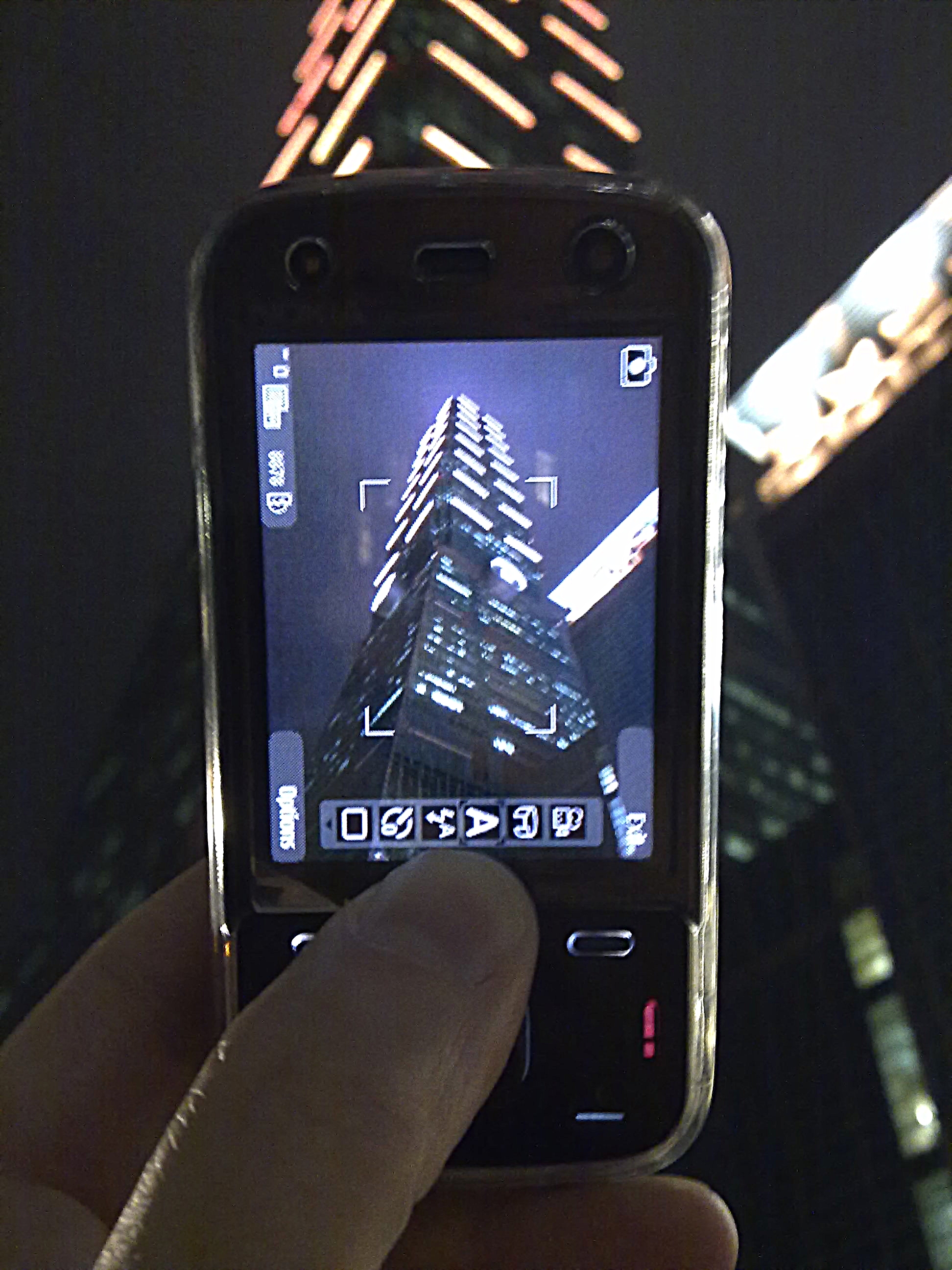
Here’s the Nokia N86 outside of Taipei 101 in November, 2009. WOM World graciously loaned me this legendary Nseries device for a points-burning run around the world. Okay, mostly Asia.
My interest in this particular Nokia can be traced a bit further back to this photo, in which a Mr. James Whatley bungee-jumps over Victoria Falls with an N86 strapped to his wrist. Now that’s a rockstar blogger…
A hallmark of the N86 was its full-frame video sensor; though output was limited to 640×480 pixel VGA resolution, you could use the entire 8 megapixel sensor for zooming, as per the example above.
In addition to that pan-Asian jaunt my N86 also travelled with me to Moscow in the spring of 2010, and took some fantastic photos there.
And in September of 2011 my N86 accompanied me on a trip to Kenya. Nokias were, as you’d expect of the developing world, very popular in Mother Africa. But I was entirely caught off-guard by the pervasiveness of Android in shops and in ads on local TV.
Ah, but I’m getting ahead of myself…
]]>The N79 was a lot like Sony Ericsson’s T610 in that it had no groundbreaking features of its own, but instead wrapped up the innovations of the day in an attractive and affordable package. Though small enough to fit into a pants pocket the N79 had a 5 megapixel camera with lens protection, plus a front-facing camera for videoconferencing. 3G and WiFi radios were at the ready to serve your data needs. Navigating through the old school S60 UI was made easier (or at least different) by the innovative Navi™ wheel. What I liked best was the return of Nokia’s Xpress-On covers — updated for the 21st century with some clever technology that made the background colour of the screen match the back cover of the phone. Had I kept my N79 longer I would have a fairly large collection of Xpress-On covers by now.
But I didn’t. You see, regressing from a qwerty keypad to a T9 number pad was made considerably more difficult by the N79’s awful buttons. They were flat, offered almost no feedback and felt extremely cheap. Hammering out text messages, a breeze on my Eseries phones, was now a painful chore.
Still, I was definitely won over by what Nseries had to offer — in particular Nokia’s gaming platform of the day, called N-Gage. A favourite title was Mile High Pinball, my first modern-day gaming addiction since Bejeweled on my Treo almost a decade prior. Imagine a pinball table that extended infinitely and you get the general idea.
Though the days of N-Gage were numbered, Nseries devices were getting better and better. My N79 got to tag along with me on a points-burning mission around the world in November of 2009; sadly, it spent most of that trip in my suitcase, sidelined by the Nseries that would take its place as soon as I got home…
]]>
Here’s Nokia’s N79 — a dummy model showing some available options for Xpress-On covers that came with. Changing the back cover on your N79 would also change the background colour on your home screen. Clever.
I played with an N79 during the N97 24/7 tour and was so enamoured with it that I started poking about for one soon as I got home…
… And thanks to an eBay auction I soon had myself a brand-new, factory unlocked N79 to call my own.
Here’s the N79’s Navi™ wheel in action, a neat feature that in no way excused the horrible number pad underneath — which is a real shame, since everything else about it was great.
As this was my first-ever Nseries device, I finally got to use my N-Gage account. And Mile High Pinball was far and away my favourite title on Nokia’s ill-fated gaming platform.
]]>Hi Andrew,
Would you like to join Nokia for a two week trip across the US next month demonstrating some of the capabilities of the Nokia N97?
And thus, in the summer of 2009 this humble blogger of some eight years got his fifteen minutes of fame. I don’t think I was WOM World’s first choice for this gig, but that didn’t matter; I wasn’t the first choice to tour Asia with The Second City either way back when, but I still got to go. How could I pass up an opportunity to visit four cities on someone else’s dime, with a worldwide audience watching our every move?
Two amazing weeks that July were spent in the lovely company of three fellow bloggers — Matthew Bennett, Jon Bruha and George Kelly. Dan Silvers was our chaperone in Los Angeles and San Francisco, then rejoined us in New York City after we had a few days in Chicago on our own. Fond memories of “N97 24/7” are many; a few of my favourites:
- The unabashed geeky joy of some high-level phone talk on the hundred dollar-plus cab ride from LAX to our boutique Hollywood hotel.
- Our meet-up in San Francisco, where I met Dennis Bournique of WAP Review, Myriam Joire from Engadget and Ewan Macleod, a mobile entrepreneur from the UK.
- A failed “challenge” in Chicago, which turned into a rather awesome bender in a bar at the base of the Willis Tower.
- A decidedly over the top wrap-up party in Manhattan, full of “beautiful people” who mostly had no idea who we were, or even what the event was about.
Oh yes, the phone… I viewed the N97 as an iPhone with a secret weapon — the pop-out qwerty keypad underneath. An over-simplification perhaps, but that seemed to me to be the best way to pitch the device to non-Nokians. Unfortunately, it was a pretty hard sell. Where the iPhone was elegant the N97 was clunky, if ultimately more powerful. I had never before tested a mobile device to its limits like I did during those two weeks, and all too often the N97 came up short. Battery power was a constant issue, despite each of us having two devices. The built-in GPS radio took forever to lock on to a signal. Worst of all, we simply spent too much time hunting through menus to get to what we were looking for.
I think its a testament to the character of our blogging quartet that we took the perceived failure of this tour so personally. We had three scheduled meet-ups, one in every city but New York. The turnout was pretty good for the first, fantastic for the second and something on the order of two people for the third. I’ll never forget looking at an entire wall of catered food and then across an almost-empty room at the University of Chicago. In retrospect we probably could have had a lot more fun with the challenges that WOM World handed down to us. But at the time we took our role as Nokia ambassadors very seriously, perhaps too much so.
I didn’t get to keep a souvenir N97 from the tour, but I did end up winning one in a contest the following Christmas. I used it as a test subject for some theme hacks, but never as my full-time phone.
]]>
Here it is, the infamous N97. It wasn’t Nokia’s first touchscreen device, but it was the first to show an obvious iPhone influence — namely the chrome bezel around the perimeter of the device.
The hidden qwerty keypad was an obvious advantage over Apple. As for the touch factor, the N97 was finger-friendly on the home screen widgets but less so elsewhere — explaining the “one foot in the past” stylus that was included in the box.
Nevermind that the N97 was kind of a dud; it provided me with a once in a lifetime opportunity to take one with me across the USA in July of 2009. The video above is an 11-minute compilation of that two-week tour; I just dropped in some appropriate music.
Note that if the video quality looks like crap it’s because the source material is QVGA — not sure why Vimeo won’t let me embed it at its native resolution…
In December of that year I would finally get an N97 to call my own, courtesy of a contest run by Qik. Unfortunately by this time I was using a non-touch Nseries as my daily driver.
I did manage my first-ever S60 phone hack, though — faithfully following the instructions of other, more clever N97 users.
]]>

